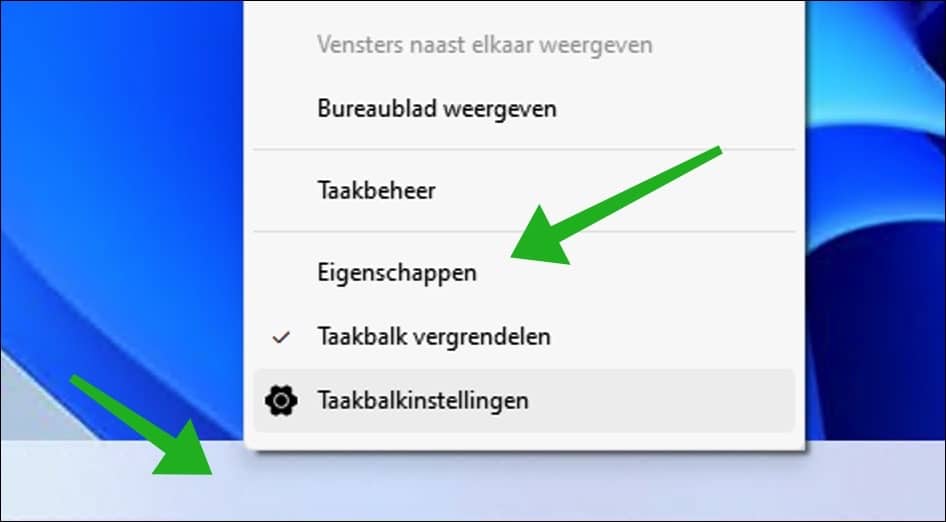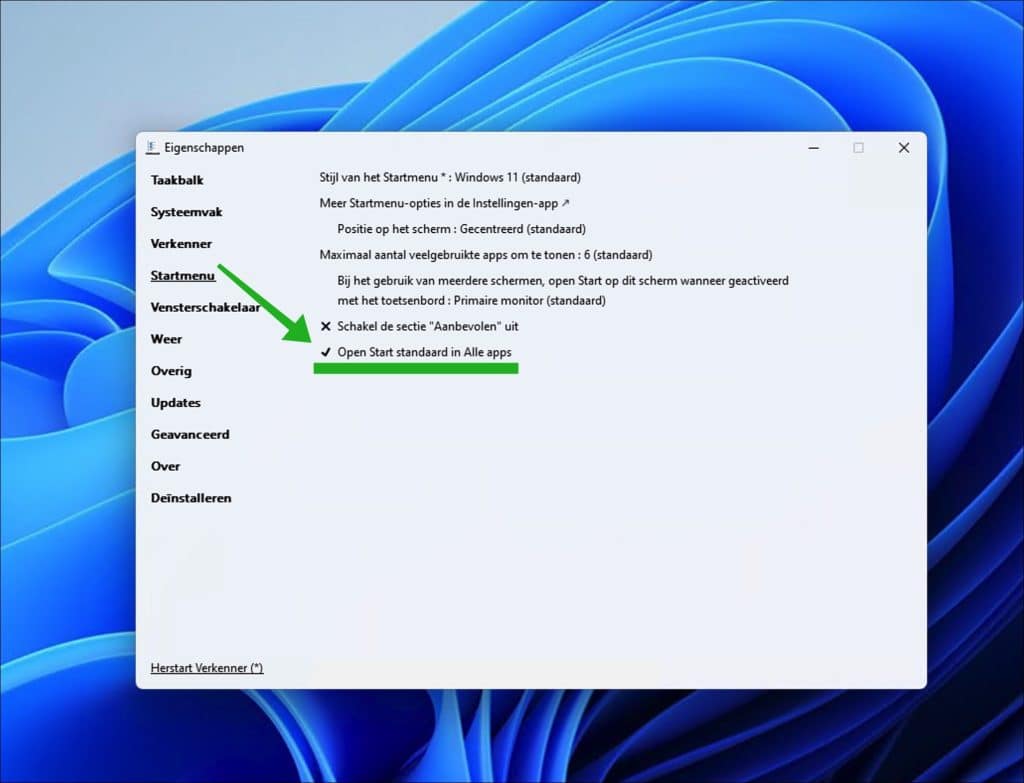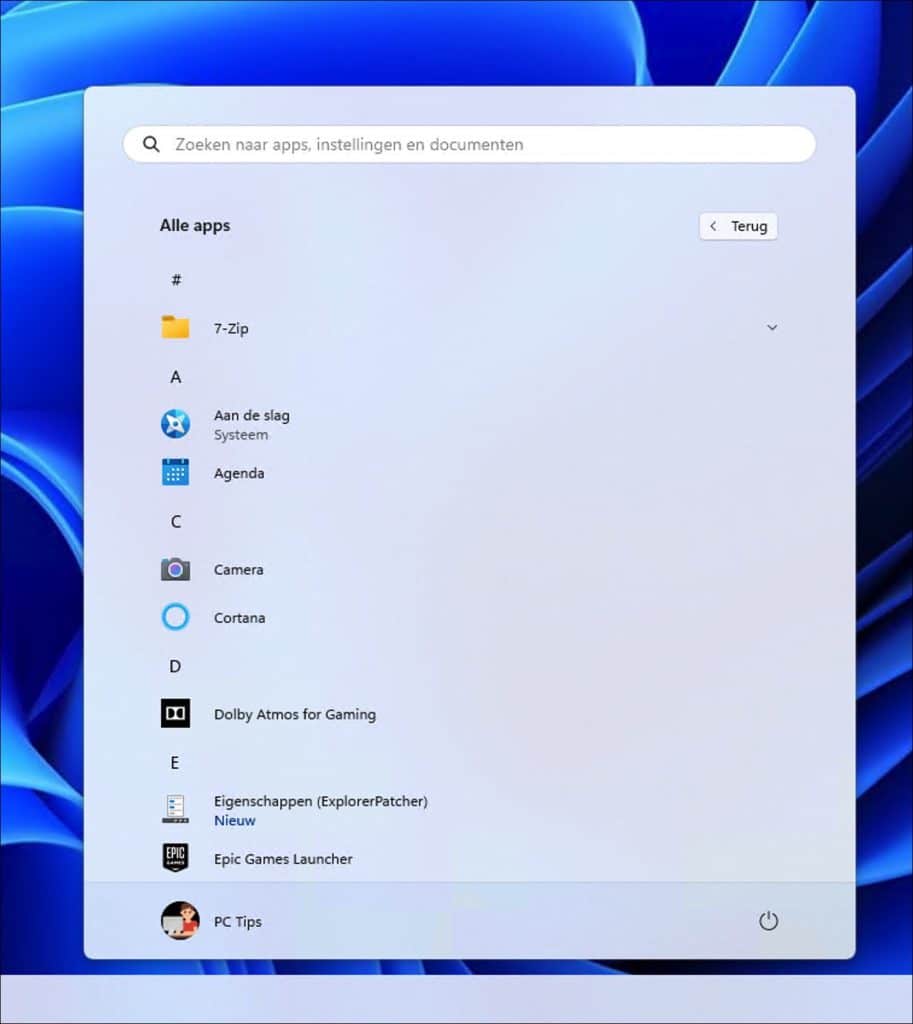Als u iemand bent die graag het overzicht houdt van alle apps op uw computer, dan is de volgende aanpassing van het Start menu een overweging waard.
Het startmenu van Windows 11 heeft een vernieuwd ontwerp dat afwijkt van eerdere versies van Windows. Zo is het Windows 11 startmenu opgedeeld in verschillende secties met vastgemaakte apps en aan aanbevolen sectie waarin veel gebruikte bestanden, mappen en apps worden weergegeven.
Sommige mensen hebben liever een overzicht van alle apps in een lijst. Dit houdt in dat alle apps van boven naar beneden in een lijst worden weergeven, gesorteerd op het alfabet. Met een aanpassing is dit nog steeds mogelijk. Hiervoor gaan we een hulpmiddel gebruiken genaamd “ExplorerPatcher”. Dit is hoe werkt.
Meld u dan aan voor onze nieuwsbrief.
Alle applicaties weergeven als een lijst in het Windows 11 Start menu
U kunt met ExplorerPatcher verschillende aanpassingen doen aan de Windows 11 “Shell”. Ik wil wel een kanttekening maken dat er problemen kunnen ontstaan naar het gebruik van ExplorerPatcher. Houdt hier rekening mee als u na het installeren van deze software onverwachte problemen ervaart met updates of veranderingen aan het uiterlijk van Windows 11.
Om te beginnen download ExplorerPatcher naar uw computer. Na het uitvoeren van het installatiebestand wordt het scherm even zwart en ziet u direct een taakbalk die herkenbaar is als de taakbalk uit Windows 10.
Klik erop met de rechtermuisknop en klik op “Eigenschappen”.

Schakel nu de optie “Open Start standaard in Alle apps” in en klik links onderin op “Herstart Verkenner”.

Als u nu het startmenu opent, dan ziet u dat alle apps direct zichtbaar zijn in een lijst gesorteerd op het alfabet.

Mocht het nu niets zijn, dan kunt u ExplorerPatcher op de volgende manier verwijderen.
Klik met de rechtermuisknop op de taakbalk en klik vervolgens op “Eigenschappen” of zoek naar “ExplorerPatcher” en ga naar de sectie “Verwijderen”, of gebruik “Programma’s en onderdelen” in het Configuratiescherm of “Apps en onderdelen” in de app Instellingen, of voer ep_setup.exe /uninstall uit, of hernoem ep_setup.exe naar ep_uninstall.exe en voer dat uit.
Ik hoop u hiermee geïnformeerd te hebben. Bedankt voor het lezen!


Help mee
Mijn computertips zijn gratis en bedoeld om andere mensen te helpen. Door deze pc-tip te delen op een website of social media, helpt u mij meer mensen te bereiken.Overzicht met computertips
Bekijk ook mijn uitgebreide overzicht met praktische computertips, overzichtelijk gesorteerd per categorie.Computerhulp nodig?
Loopt u vast met uw pc, laptop of software? Stel uw vraag op ons computerforum en krijg gratis computerhulp van ervaren leden en experts.